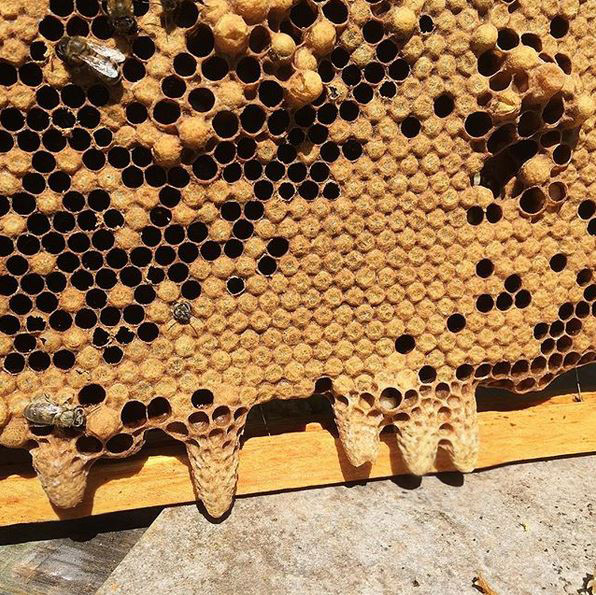what should you know about Swarm cell method

Swarm cell method

Swarm cells have the capacity to create ten to fifteen good queens. Although a hive can be stimulated to produce swarm cells, this article focuses on the case where swarm (queen) cells are discovered unexpectedly during a hive examination. You can see that the workers have constructed a lot of capped queen cells already.
Even if you didn’t actively contribute to the creation of these cells, the situation meets many of the requirements for creating high-quality queens. The hive that created the swarm cells made it through the winter, is doing well, and has a population that is strong and thriving enough to outgrow their home. These cells are formed in a queen-right hive and are well-fed.
Now that you have swarm cells, you must decide what to do. You can requeen the hive (nuc), divide it, or produce mated queens in mating boxes. If you determine that you have enough hives and wish to requeen the mother hive, just remove all but one or two queen cells from the hive. Let the bees produce a new queen naturally.
You will construct mating boxes or nucs using the queen cells to expand the size of the hive. Two queen cells are desired for each division. The use of two cells increases the likelihood of success because a queen cell may occasionally be empty. The strength of the hive and the number of available queen cells will have a major impact on how many divisions or mating boxes are needed. You should be able to find a few brood frames with a couple queen cells in each one. The frames are ready for usage. However, the queen cells are more frequently grouped together on a single frame. In this situation, it will be necessary to extract and disperse the cells in order to retain two queen cells per mating box or nuc.
Step 1:
Determine how many queens or nucs you can generate after assessing your available resources, such as the quantity of brood, the number of workers to care for the brood, the presence of queen cells, and the availability of mating boxes or nucs.
Step 2:

Using the components from the original hive as a source, construct the nucleus hive or mating box. If the mother (original) hive’s resources are insufficient to support the number of mating boxes or nucs you decide to create, you can make up the difference with brood and workers from other hives.
Nucleus configuration
- Three capped brood frames of brood with some developing cells
- a frame that is primarily pollen
- One frame that is primarily honey
- enough workers to cover the brood and queen cells
Step 3:

Maintain at least a few brood frames and a few capped cells in the original hive. The new queen in the mother hive will emerge from one of these surviving queen cells.
Step 4:
Cut out the well-mottled queen cell or cells from the original hive. These cells should resemble a Virginia peanut’s shell in general. To protect the developing queen, remove a portion of the surrounding comb along with the queen cell.
Step 5:

If the mother hive and the nuc or mating box are still in the same yard, add an equal number of bees to the nuc or mating box to make up for the fact that the field bees will eventually return to the original hive. When adding the extra bees, make sure the queen is not among them.
step 6:
Feed and reduce admission. Add a shim to make room above the top bars before sealing the nuc, and then add a protein patty. A 2 to the 3-inch circular hole should be cut out of the center of the nuc’s cover. Over the hole, invert a Mason jar filled with 1:1 sugar syrup.
Do not forget to read about what should you learn about Hopkins Method







